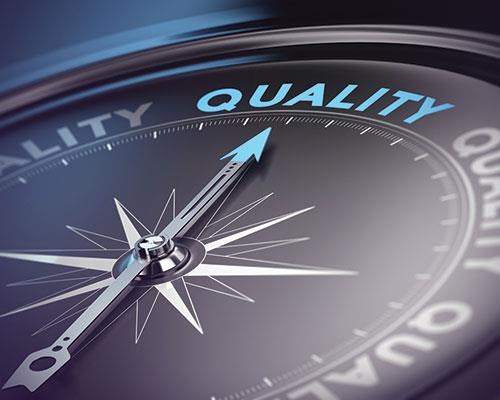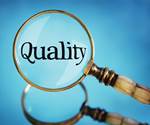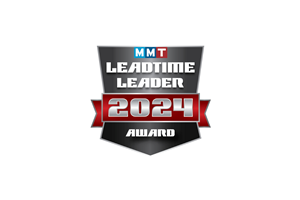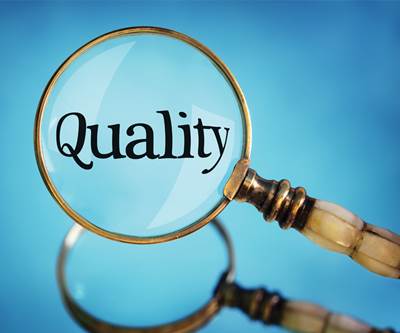A Practical Field Guide for ISO Best Practices
By focusing on existing people, processes and culture, ISO can help mold builders achieve dramatic improvements in sales, productivity, quality, service and profitability. Here is a practical field guide to ISO 9001.

Getting back to basics is sometimes necessary to grow your business, according to Keeping Up with ISO columnist Lewis Yasenchak. Lewis works primarily with molders and mold builders on using ISO certification to boost efficiencies. He says his customers are highly successful because they leverage manufacturing processes that are harder to duplicate, include significant secondary operations, unique tools and/or materials and high automation. They also have higher productivity and higher profit margins, a more than 10-percent return on assets, 5-percent sales growth, and 15 to 20 percent net income (while the industry average is 9.6 percent). The CEOs/owners of these companies are also dedicated to organizing the company more efficiently than the competition, and people are key. People represent 40 to 60 percent of controllable costs [sales minus material costs] and that's the easiest thing to manage to improve the bottom line. These companies are also successful in adding new customers and entering into new markets while implementing "hands-on" industry-specific ISO management systems standards and FDA requirements.
So, how is this all done? By implementing new technology, tips and techniques, and best practices aimed at helping companies boost efficiencies and with a focus on existing people, processes and culture to help achieve dramatic improvements in sales, marketing, productivity, quality, service and profitability. The right ISO consultant will work side by side on the floor coaching frontline supervisors in behavioral changes that drive performance and financial improvements, standards and regulatory compliance. For that purpose, Lewis has created a field guide to assist moldmakers and molders, step by step, in implementing a quality management system in conformance with ISO 9001:2015, whether from scratch or by transitioning from ISO 9001:2008.
Within the guide each sub-clause containing requirements is the focus of a five-page questionnaire "ISO 9001:2015 Quality System Information" that consistently presents features that fulfill the requirements of ISO 9001:2015. This questionnaire examines each sub-clause of clauses 4–10 of ISO 9001:2015, which was introduced and published this year in our Keeping Up with ISO column.
The field guide includes a flowchart overview of the manufacturing and business process, centered around the ISO System; a flowchart of the ISO management systems structure showing value-chain relationships; a list of 10 business measures to follow and control; a table showing how to beat China pricing; an ISO 9001:2015 quality system information questionnaire; a problem-solving worksheet; 5S information to help create effective workplace organization and standardized procedures to improve safety, quality, productivity, and employee attitudes; a sample effective supplier management scorecard and a shop maintenance and plant operation sheet.
This field guide is a user-friendly source of ISO 9001:2015’s requirements for implementation purposes, says Lewis. It helps identify the documents/documentation required, along with recommendations on what to consider retaining/adding to a QMS during ISO 9001:2015 implementation. It also guides internal auditor(s) regarding what to ask to verify that a conforming and effective QMS exists and directs management on what it must do and should consider to satisfy ISO 9001:2015’s enhanced requirements and responsibilities for top management. It depicts step by step what must occur to create an effective, conforming QMS.
According to Lewis, what separates this field guide from most other guides on ISO 9001:2015 and its implementation are plastics industry-specific guidance and the flowcharts showing the steps to be taken in implementing a QMS to meet a sub-clause’s requirements. As the flowcharts themselves can be overwhelming when you first look at them, a text box appears with each flow chart that explains pertinent facts and/or what the flowchart represents and how it is to be used. Also, the 5S Program for housekeeping/cleanliness and the 8D Problem Solving Worksheet are "hands-on" added value to the organization. You can read his series here and click here to connect with Lewis directly.
Lewis Yasenchak, MBA, BS, is the founder/owner of P&Y Management Resources and author of MMT’s 2016 Keeping Up with ISO series. He developed this guide to share his experiences with tackling the ISO standard burden put upon small and medium-sized mold builders and molders. He applied his 35 years of experience in sales, marketing manufacturing, product development, quality control and quality assurance to this field guide.
Related Content
MMT Chats: A More Modern NPE “Made for You”
The Plastics Industry Association is making NPE 2024 a “can’t miss”’ experience with more of everything – education, exhibitors and networking! The PLASTICS Industry Association Chief Operating Officer Glenn Anderson and Director of Trade Show Marketing Damaris Piraino share what’s in store for attendees of next year’s May 6-10, 2024 in Orlando, Florida.
Read MoreFAQs: What Are the Leadtime Leader Awards?
Here are answers to some frequently asked questions about MoldMaking Technology's annual Leadtime Leader Awards competition.
Read MoreU.S. Economic Fundamentals Impacting Moldmaking
The economy continues to downshift, capping growth in moldmaking.
Read MoreAMBA Calls Members for Comment Submission During Tariff Review
The imposing of a 25% tariff of molds, tooling and dies imported from China is under review by the U.S. government.
Read MoreRead Next
Keeping Up with ISO: ISO 9001:2015 Certification Takeaways
One way to properly manage the moldmaking supply chain is to implement ISO guiding principles that govern every activity within a mold shop or molding facility.
Read MoreReasons to Use Fiber Lasers for Mold Cleaning
Fiber lasers offer a simplicity, speed, control and portability, minimizing mold cleaning risks.
Read MoreHow to Use Continuing Education to Remain Competitive in Moldmaking
Continued training helps moldmakers make tooling decisions and properly use the latest cutting tool to efficiently machine high-quality molds.
Read More






















